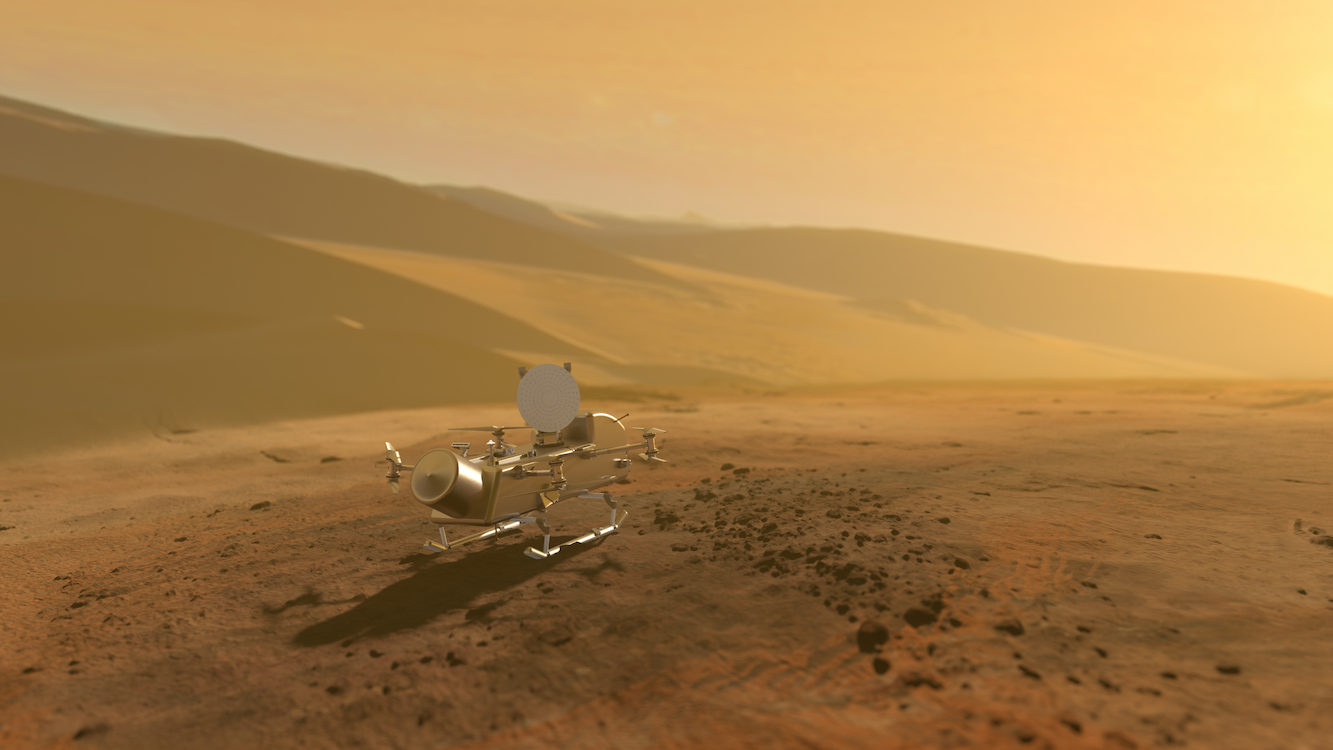
One of the more crazy, and extremely exciting, missions NASA is working on for space exploration is the Dragonfly spacecraft. This car-sized drone will explore the alien world of Titan, one of the moons of Saturn, by flying around it instead of driving like its Martian counter-parts. It just received some wind tunnel testing with a half-scale test vehicle.
Dragonfly tests flight on Titan
The idea is to take everything that can be done on one of NASA’s car-sized Martian rovers but giving it the ability to traverse much longer distances, faster. So how do you do that? Well you stick some rotors on it and let it fly!
Dragonfly intends to explore Saturn’s moon Titan as a car-sized, nuclear-powered drone. Yeah you hear that right, NASA plans to send a nuclear powered drone to a moon that has its own atmosphere. It turns out Titan’s low gravity, thick atmosphere, and low wind makes it pretty easy to fly there.
To get ready for that day, NASA and the Johns Hopkin’s Applied Physics Laboratory have been testing mockups in wind tunnels. Just recently APL conducted some tests in NASA Langley’s 14 by 22 foot subsonic tunnel.
Pressurized to be similar to Titan’s atmosphere, APL placed a half-sized mockup of the drone inside it and tested the aircraft’s ability during sustained flight and the landing process. This was the fifth test at Langley of various mockups for Dragonfly, each one getting more and more sophisticated as the missions nears development milestones.
The mission is planned to launch in 2027 and carry instruments to study both the surface and atmosphere of Titan. Direct study of Titan hasn’t taken place since ESA’s Huygens probe landed in 2005.
Join our Discord Server: Join the community with forums and chatrooms about space!
More flight coming to deep space exploration
Ever since Ingenuity took its first flight in 2021, NASA, scientists, and even Congress, have been interested to see just how far this technology can go. While Dragonfly got its funding the year before Ingenuity launched, flying on other planes have been in serious discussions for decades.
All it took was a little tech demonstrator for everyone to realize it truly is possible. And the excitement isn’t over yet as Ingenuity is still going strong on Mars two years past its planned expiration date – flying 50+ missions so far.
In the future Dragonfly won’t be the only missions we see with wings or rotors. There are proposals to expand on Ingenuity’s ability and be used in the Mars Sample Return mission to snag sample cores, however funding that program at all might be hard.
There have been proposed missions to Venus that will never even touch the ground and stay in flight for their entire duration. Of course we can’t forget the countless concepts of sending weather balloons to various planets and moons to study them for longer periods of time.
Dragonfly will in fact be the largest of whatever future space-drones come out of development. It will also be an exciting time of exploration of another world. Few images of Titan’s surface exist. The NASA-ESA mission Cassini-Huygens mostly only got photos during descent and was only active for a couple of weeks on the surface.
If Dragonfly’s launch takes place in 2027, arrival to Titan and landing is expected in the mid-2030s. So buckle up, it might be a long wait for this one.
FTC: We use income earning auto affiliate links. More.



Comments